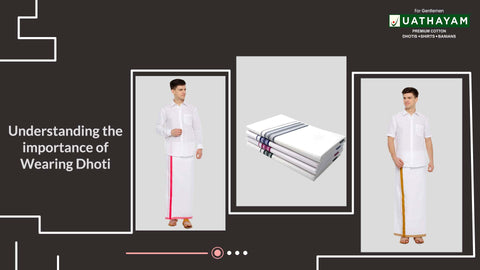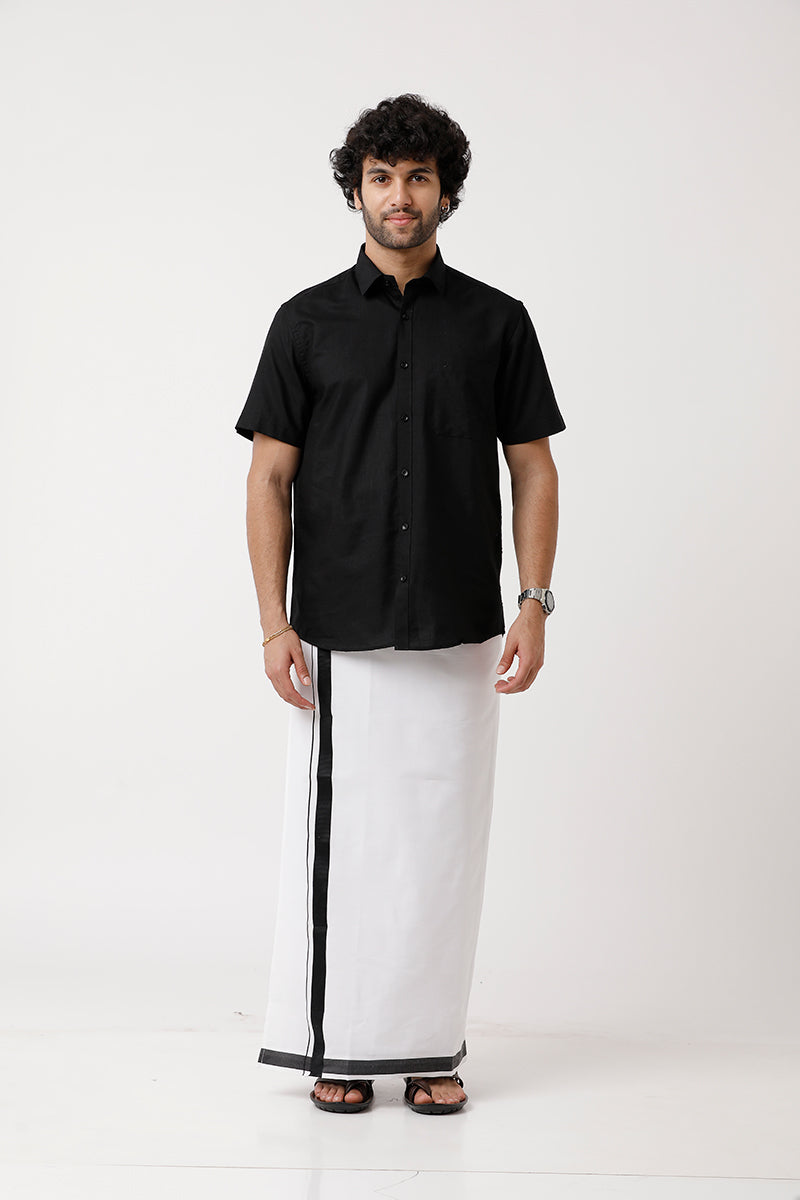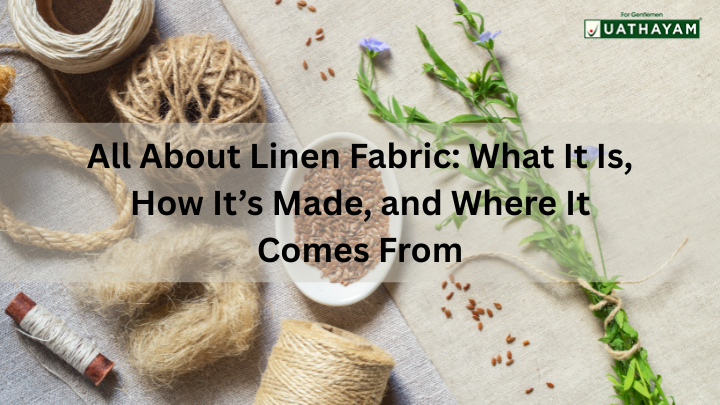Understanding The Importance of Wearing Dhoti
When it comes to traditional Indian clothing, the dhoti holds a special place in the hearts of many. Understanding the importance of wearing a dhoti goes beyond fashion and style; it's a journey through history, culture, and practicality.
In today's fast-paced world, where fashion trends come and go, it's crucial to remember and appreciate the significance of traditional clothing like the dhoti. This elegant and timeless attire is not just a part of our cultural heritage but also holds immense importance in various aspects of life.
This comprehensive article delves into the rich history, the multifaceted importance of wearing a dhoti, and why Indians prefer wearing Dhotis. So, Let's get started.

The Rich History of Dhoti
The dhoti, a traditional Indian garment, has a history that spans millennia. It has been integral to the Indian subcontinent's culture and identity. The word "dhoti" is derived from the Sanskrit word "dhotra," which means a piece of cloth.The earliest mention of the dhoti can be traced back to ancient scriptures and texts, such as the Vedas and Upanishads, dating over 2000 years ago. The dhoti has evolved, but its essence and symbolism remain unchanged.
These ancient texts describe the dhoti as the attire of sages and scholars. It was revered for its pure and unadorned nature, making it the ideal choice for those seeking spiritual enlightenment. The dhoti's association with wisdom, austerity, and purity solidified its place in ancient India's cultural and spiritual landscape.
Why Indian Men Prefer Wearing Dhoti?

Let's explore why Indian men favor wearing the dhoti in contemporary times:
Cultural Significance:
One of the main reasons Indian men like to wear dhotis so much is that they have a lot of cultural meaning. India's history and traditions are deeply rooted in the dhoti. The flag shows the country's long history and the values passed down from generation to generation.Rituals and Ceremonies:
Dhotis holds immense importance in various religious and cultural ceremonies. They are an essential part of weddings, pujas, and festivals. The attire is pure and sacred, making it a fitting choice for such occasions.Respecting Elders:
In many parts of India, wearing a dhoti is a sign of respect, particularly towards elders and seniors. Donating a dhoti while interacting with or paying homage to those older is customary. This practice demonstrates a deep-seated respect for tradition and older people.Comfort and Practicality:
Dhotis are made with light and airy materials, and cotton is popular. They are great for India because the fabric lets air pass through it, especially when it's hot and humid. Because dhotis are airy, people who wear them stay cool even when it's hot outside.Ideal for Yoga and Meditation:
Yogis and spiritual practitioners highly favour dhotis. The reason behind this preference lies in their comfort and flexibility. The dhoti allows for ease of movement, which is crucial during yoga and meditation sessions. Its minimalistic design aligns with the simplicity and purity associated with these practices.Versatile Attire:
Indian men appreciate the versatility of dhotis. These garments can be worn casually for everyday activities, making them a practical choice for daily wear. Additionally, they can be dressed up for more formal occasions, demonstrating their adaptability as an all-purpose attire.Regional Diversity:
India's vast cultural diversity is also reflected in the regional variations of the dhoti. Each state and region has its unique style of dhoti, often influenced by local traditions and customs. This diversity highlights the cultural richness of the country. It offers a wide array of options for men to choose from.Fashion Revival:
In recent years, traditional Indian attire, including the dhoti, has experienced a revival in the fashion world. Esteemed designers have incorporated dhoti-inspired designs into their collections, blending tradition with modernity. This fusion of classic and contemporary elements has breathed new life into the dhoti, making it a trendy choice for fashion-conscious individuals.A Symbol of Pride:
For many Indian men, wearing a dhoti is a source of pride. It signifies their connection to their cultural roots and heritage. It also showcases their commitment to preserving a tradition that has been a part of Indian culture for centuries.Variations in Dhoti Draping Styles
Dhoti draping is an art form in itself, with each region in India showcasing its unique style. The way a dhoti is draped reflects the wearer's regional identity and adds to the charm and diversity of this traditional attire. Let's explore some of the most popular dhoti draping styles in India, which show the importance of dhoti in India.Mundu Style (Kerala Dhoti):
Mundu, a traditional dhoti style from Kerala, is known for its simplicity and elegance. It's typically white or cream and made from cotton. The Mundu is draped so that the lower garment covers the waist and extends to the ankles. It's often paired with a matching or contrasting shirt.Veshti Style (Tamil Nadu Dhoti):
Veshti, the dhoti style from Tamil Nadu, is quite similar to the Mundu but has distinct variations in draping. It's usually worn in a bright white color and can have a coloured border for added flair. The Veshti is known for its comfort and is commonly seen during religious and cultural events.Pancha Style (Andhra Pradesh Dhoti):
Pancha, the dhoti style from Andhra Pradesh, is characterised by its elaborate draping method. It involves creating pleats at the front and securing them firmly with a waistband. The Pancha is usually worn with a kurta or shirt and is preferred for special occasions and ceremonies.

Dhoti-Kurta Style (North India):
In North India, the dhoti is often paired with a kurta. This ensemble is popular during festivals, weddings, and religious functions. The dhoti is draped elegantly with pleats, and the kurta complements the overall look. It's a versatile style that blends tradition and modernity.Bengali Dhoti Style:
Bengali men have their unique way of draping a dhoti. They wear a kurta with a dhoti draped differently from the traditional dhoti styles. The dhoti is wrapped around the waist and pleated in the front, giving it a distinctive look. This style is perfect for cultural events and ceremonies.Maharashtrian Dhoti Style:
In Maharashtra, men prefer the Dhotar, a traditional dhoti draped in a way that allows easy movement. It's often paired with a kurta and is known for its practicality. The Dhotar is suitable for everyday wear and festivals.Conclusion
If you're searching for the perfect dhoti that seamlessly blends tradition and style, look no further than the Uathayam Store. We take pride in offering a curated range of premium quality dhotis that cater to the discerning tastes of our customers.Our commitment to quality and tradition sets us apart, making us the go-to destination for those who appreciate the elegance and significance of this iconic Indian garment.
The foundation of a great dhoti lies in the quality of the fabric. Our collection boasts a wide range of premium fabrics, emphasising comfort and durability. Whether you prefer the breathability of cotton or the luxurious feel of silk, you'll find the perfect dhoti to match your style.
FAQs on the Importance of Dhoti
Q: Is it necessary to wear a dhoti during religious ceremonies?A: While not mandatory, wearing a dhoti during religious ceremonies shows respect and devotion.
Q: Are there specific colors and designs for dhotis?
A: Dhotis at the Uathayam store come in various colors and designs, allowing personal expression and style preferences.
Q: What materials are dhotis made from?
A: Dhotis are typically made from cotton or silk, with silk dhotis being more common for special occasions.
Q: Are there any regional variations in dhoti styles?
A: Different regions in India have their unique dhoti draping styles, showcasing the diversity of Indian culture.






